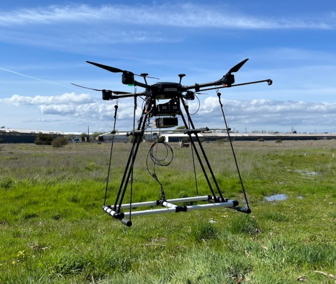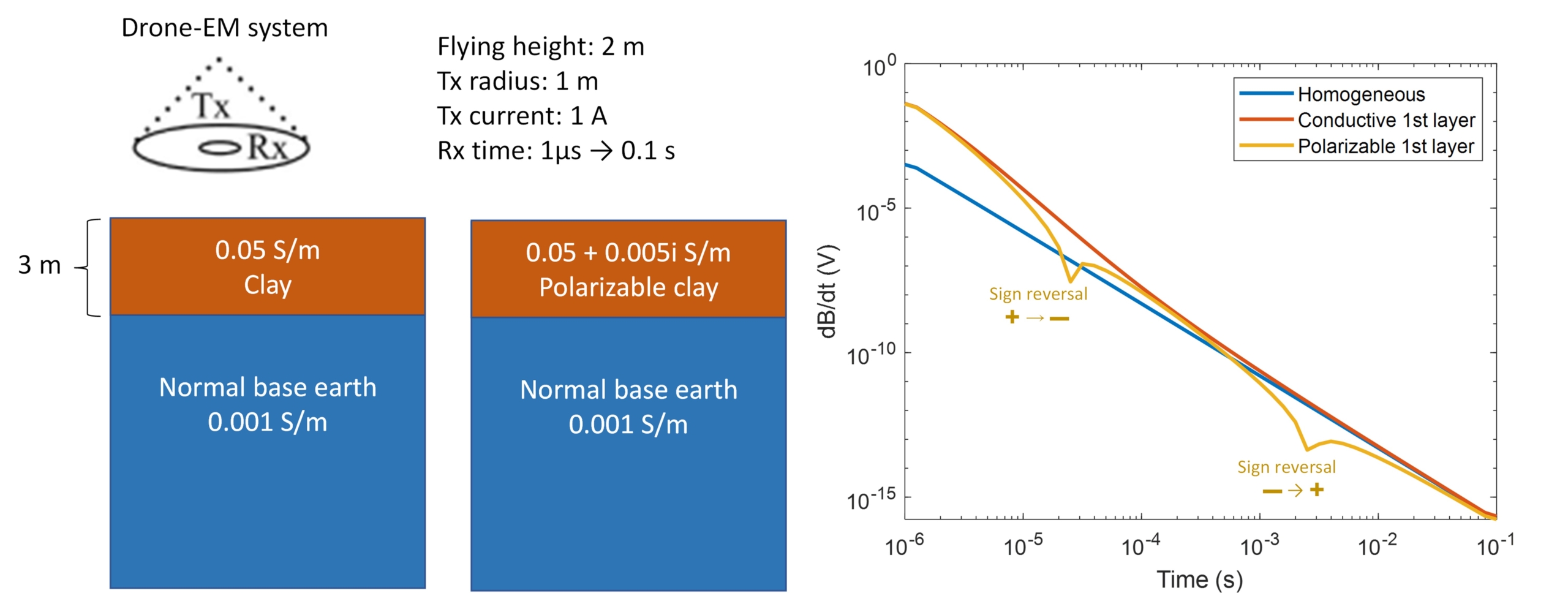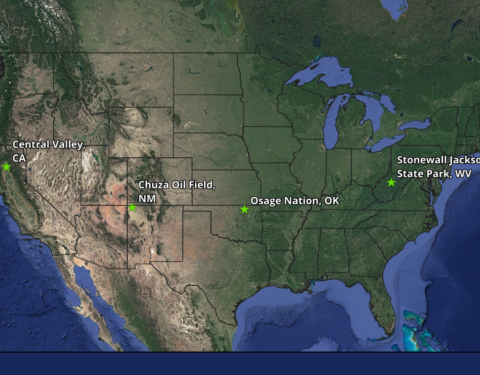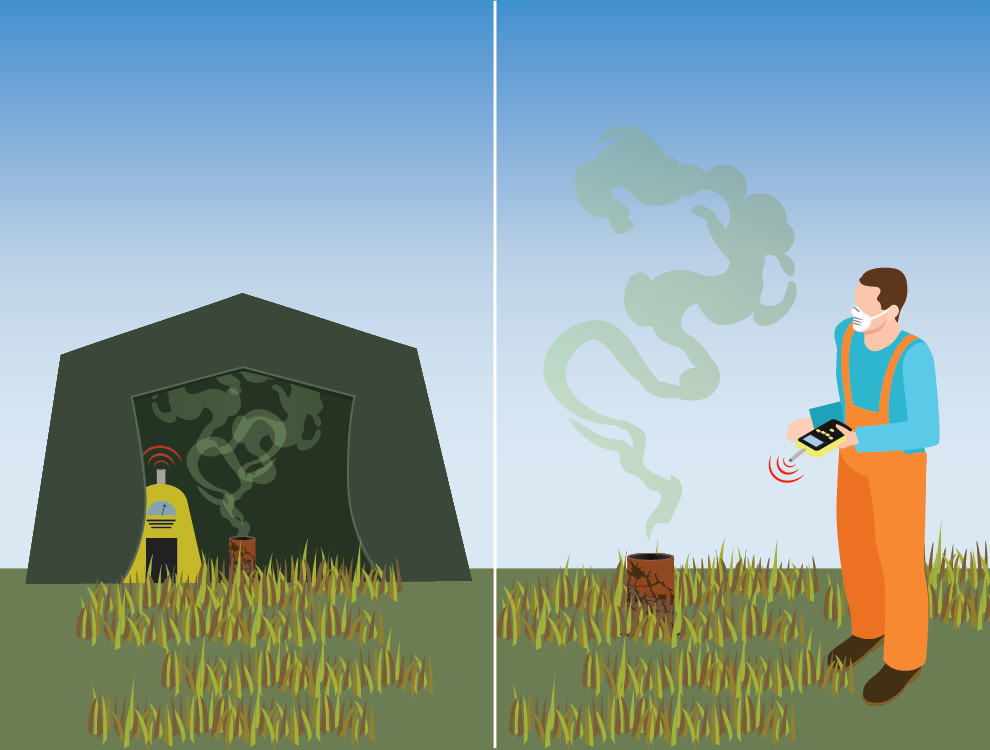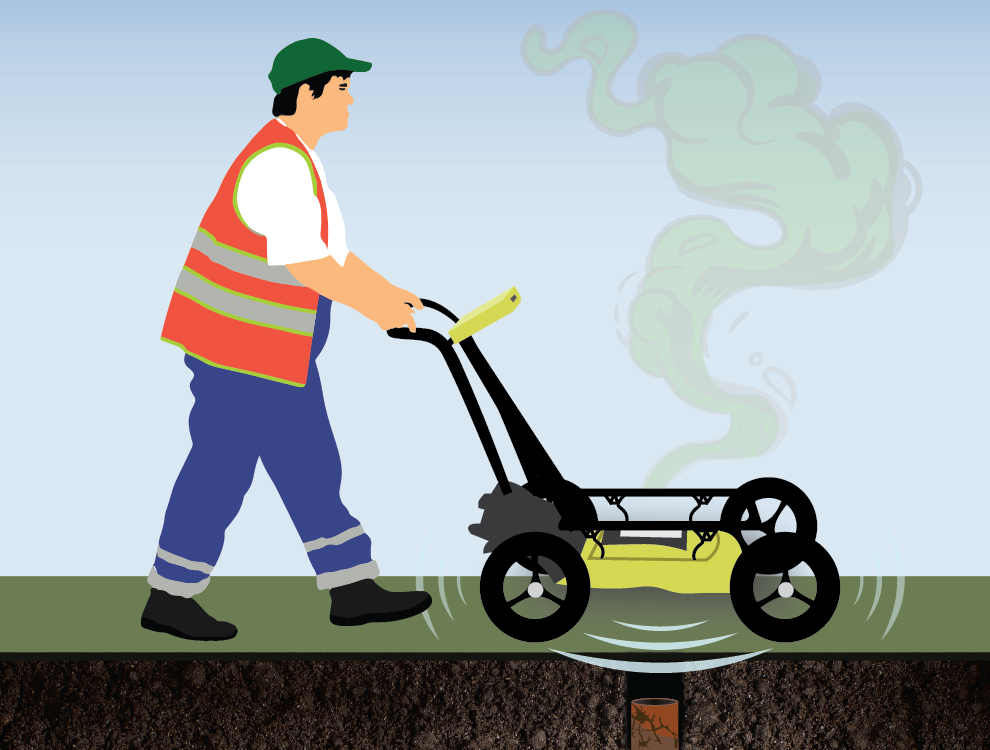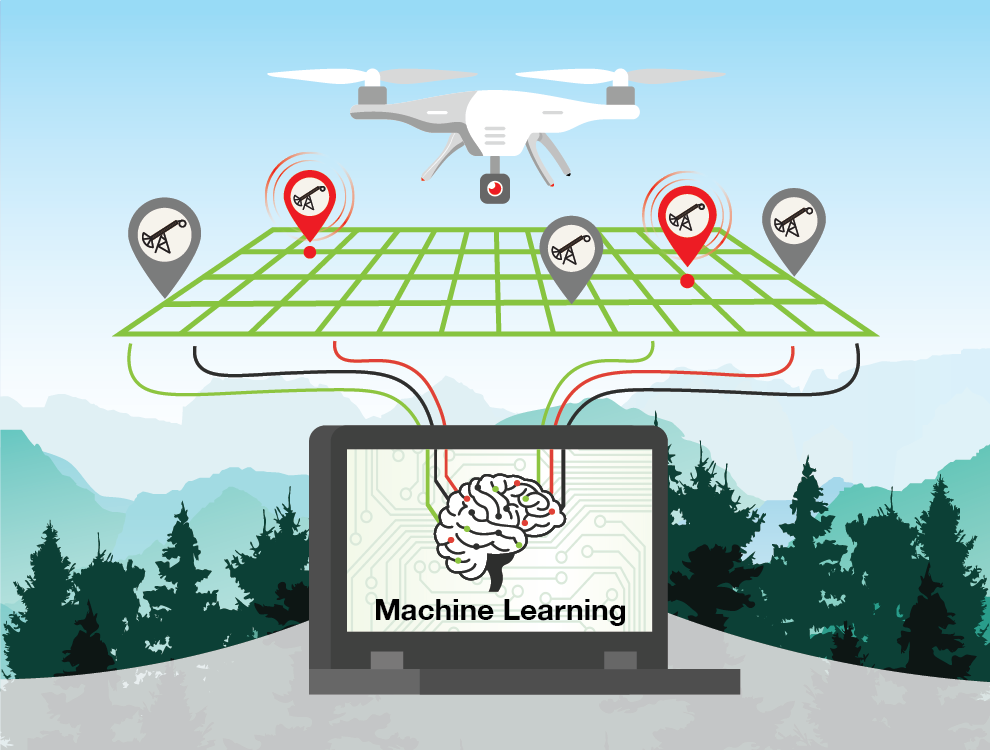Overview
Need of new tools to compensate commercial tools for steel well finding that are easy-to-use and lack of available borehole finding tools for non-ferrous and non-metallic wells.
Objective
LBNL is developing a drone based well identification tools using active source EM technology. It is aimed to offer an alternative to commercial magnetic tool with the following advantages:
- New sensing modality for non-metallic wells
- Easier to use/interpret
- Sensitive to non-ferrous materials
- More accurate location
- Less sensitive to cultural noises
Short Term Impact:
Offers a new well identification tool to improve identification accuracy and reduce uncertainty.
Long term impact:
A scalable approach that can be easily adopted by stakeholders for undocumented well identification.
Accomplishments
- Acquired and demonstrated baseline hardware for tool development.
- Identified key performance metrics and developing numerical simulations to aid equipment design.
Los Alamos National Laboratory, in a consortium with four other National Laboratories, is leading the charge in finding the best practices to find orphaned wells. There are between 300,000 and 1,000,000 orphaned wells in the United States alone. These abandoned wells can leak methane gas into the atmosphere and possibly leak liquid into the ground water. Hari Viswanathan, Environmental Scientist, explains how the team is using drones and AI to find these wells in Oklahoma and the Four Corners Region.
Research Products
TBD
Contacts
Yuxin Wu
Lawrence Berkeley National Laboratory
YWu3@lbl.gov


